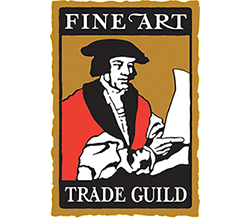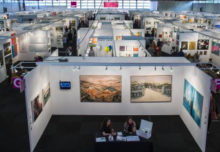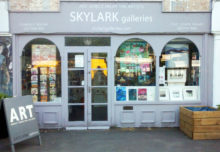The Fine Art Trade Guild, authority revisited and updated.
In a couple of recent blog posts I have mentioned the Fine Art Trade Guild. In particular the Guild standards for publishing prints, and the original art register OAR. Both were relevant to my blog posts. Now this invites the question as to what the Guild is and whether they do much else.
So here goes, background first;
The Fine Art Trade Guild was formed in 1910 as the successor to the 1847 Printsellers’ Association, set up to oversee the fine art print trade. The Guild’s aim today, as it was over 100 years ago, is to promote, develop and inform the picture industry.
The Guild HQ is in London UK but they have worldwide membership. It is chiefly a business organization representing professional artists, art dealers, art galleries, art publishers, picture framers, suppliers, and other players in the Fine Art business.
Setting Standards and informing the industry:
The Guild continues to set quality standards for fine-art prints. The Guild’s print register has helped galleries, art dealers and collectors to establish provenance for reproduction prints. ArtSure lays out standards for inks and papers.
In addition, the Guild sets standards and guidelines for picture framing. Plus they provide facilities for high quality training for art and framing professionals. Guild Commended and Certified Framers GCFs have a passed a rigorous test,
‘Art + Framing Today’ magazine keeps readers abreast of new developments by commissioning relevant commercial and technical articles on a wide range of art and framing subjects.
An active Branch network allows members to choose relevant topics of mutual interest for a lecture or demonstration, followed by discussion with colleagues in the industry.
Recent developments;
The Guild created the Original Art Register (OAR) in 2016 to document original designs and provide proof of ownership of images.
The Guild Society of Artists (GSA) was formed to help artists to further their careers. Whether an artist works as a hobby painter and shows at a few exhibitions or if they work as a full-time artist selling work internationally, the Guild Society of Artists has a host of benefits and expertise available to them.
My own involvement.
For the first couple of decades in my full-time artist career I sold directly to the public and didn’t wish to get involved with business to business. I thought it was too commercial and I didn’t like the gatekeepers. Gatekeepers? That’s gallery owners and publishers. I didn’t like them because I needed to have 100% of the income from my sales myself whereas if you go through a gallery you only get half, if you’re lucky.
I first saw the Guild stand at the Spring Fair which is a huge trade-only commercial event held here annually in the UK. The Guild was a trade organization in the business-to-business end while I was trying to make my living as an artist selling paintings directly to my collectors. So I knew about the Guild but didn’t do anything about it.
Sometime in the 1980’s I was intrigued by the new American print making techniques that we were just hearing about. I saw first examples of ‘giclee’ at a Spring Fair. There were just a couple at first. I talked to the Guild people because they were influential in the established print business. They were intrigued, as I was, and we made contact.
My tipping point and call to action.
I found out that the Guild hosted a stand at a similar trade show in New York.
Ah-ha! And Guild artist members could get a very good deal to travel to the USA, exhibit in the show, meet American printmakers, find out more about ‘giclee’, and possibly sell some pictures to the general public at the show, and maybe cover the costs. The very good deal included a government subsidy and travel grant. The deal was open to anybody but even better if you were a member of the Guild. So I joined, went to New York, found out about giclee, and sold enough original art to make a profit.
The Guild people were also keen to be on top of the possibilities of this new inkjet printing thing called ‘giclee’. They asked me to be on a new committee examining the impact that it might have on the established fine art print market in Europe. I agreed and surprisingly got myself elected as Chair of the committee where my fellow committee members were some of the leading fine-art printers and publishers in the world.
Over time the Printers and Publishers Committee examined the existing Guild Standards and suggested changes that would be appropriate in the new giclee inkjet print world.
The Court
My involvement with the Guild progressed because my Chairmanship gave me to a seat on the Court of the Guild. The Court is basically the same as a company Board of Directors. Several years later I was still on the Court, then I became an executive director, and eventually Chair of the executive as well. That role is called ‘Master of the Guild’.
Masters have a two-year tenure and the role is unpaid. My duties were to represent the Members interests to the Managing director, staff, and the rest of the Executive. It was a huge honour to serve, and a massive eye-opener for me as a one-man-band business. And I was the first full-time artist to ever hold the post. That was a few years ago. Since then I have been a member of the Guild Fine Art Committee where we look after the interests of artists, galleries, and publishers.
Conclusion.
Behind the scenes in the fine-art industry there is an established authority that is largely unknown by art collectors, art teachers, or even artists. This authority is The Fine Art Trade Guild based in London UK. The Guild set international standards for art publishing and picture framing. Plus the Guild acts as a meeting point and intelligence sharing forum for the top players in the art business.
See also my previous blog ‘Behind the scenes at the Fine Art Trade Guild’ March 2016. click here.





